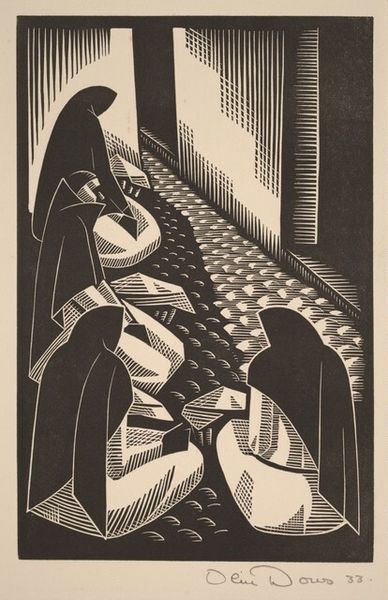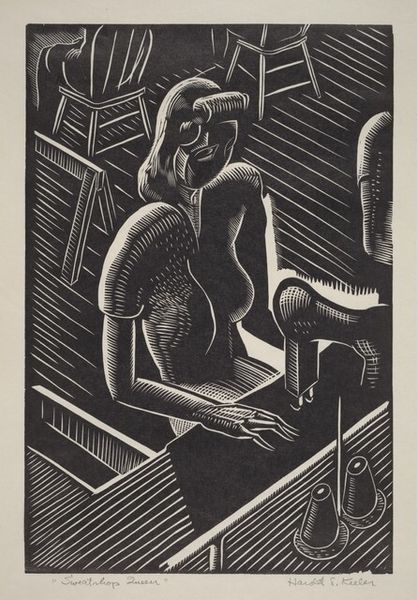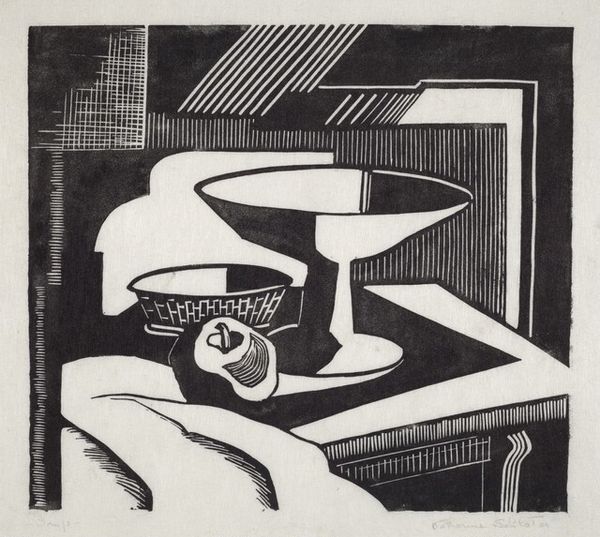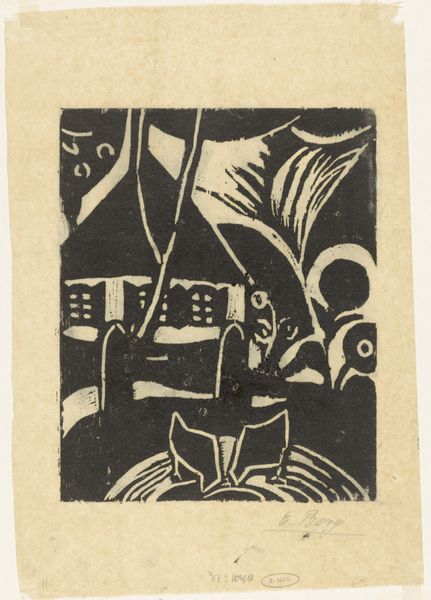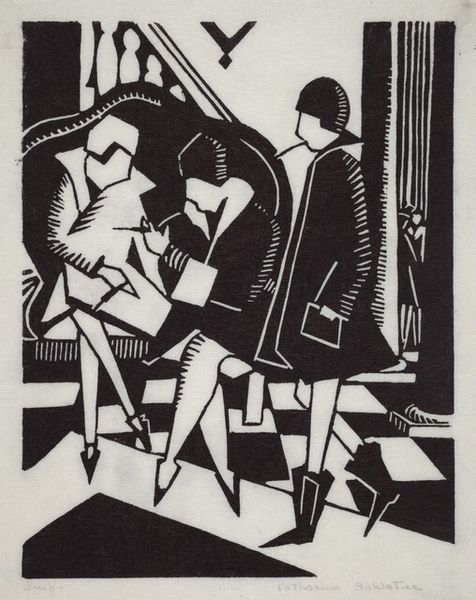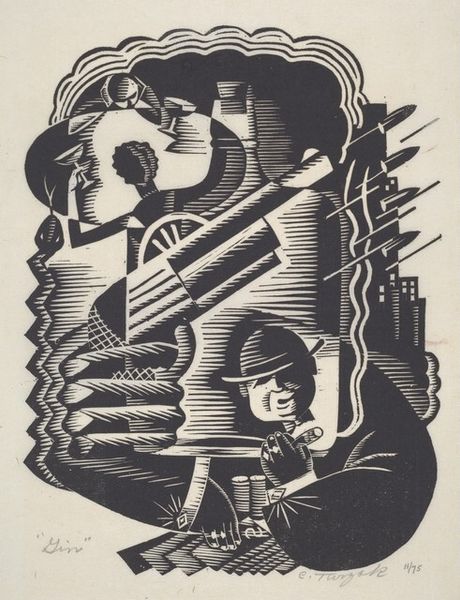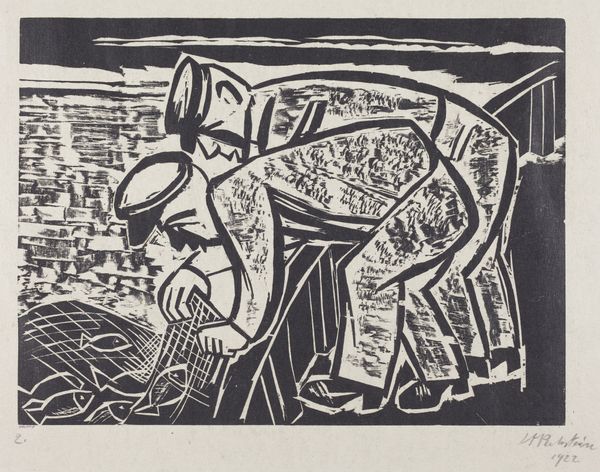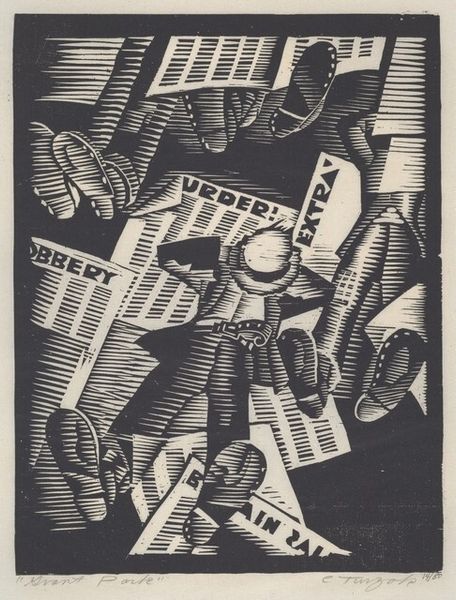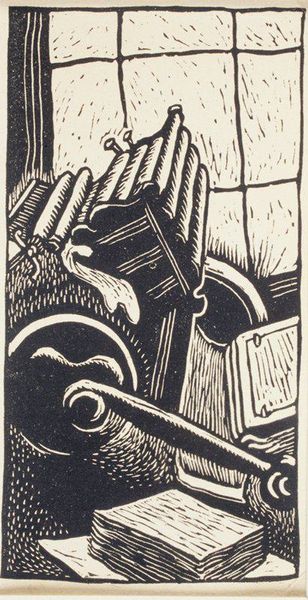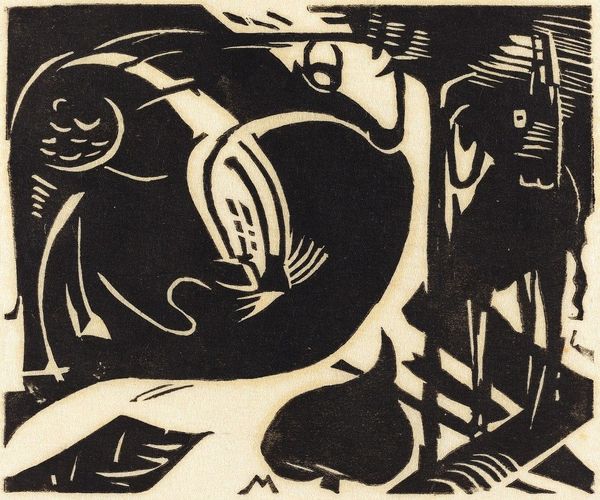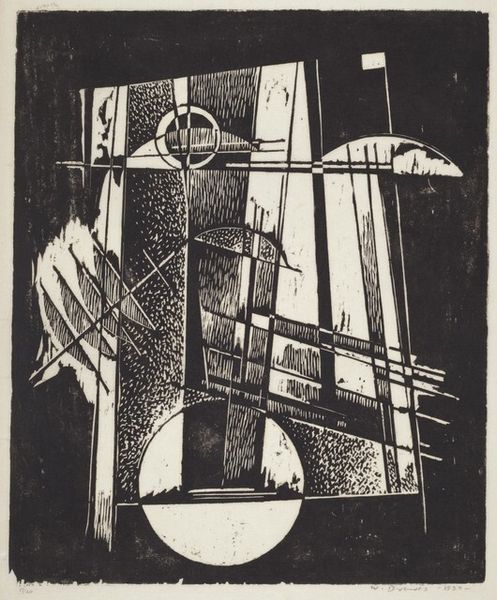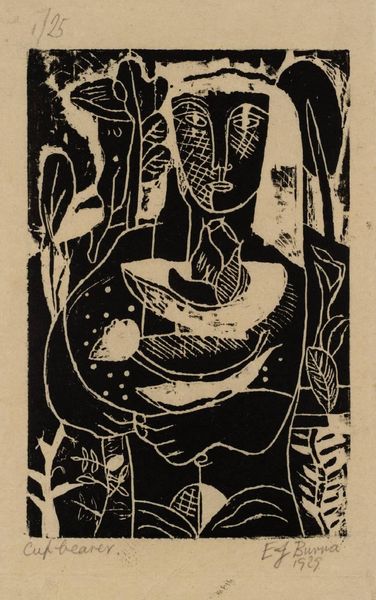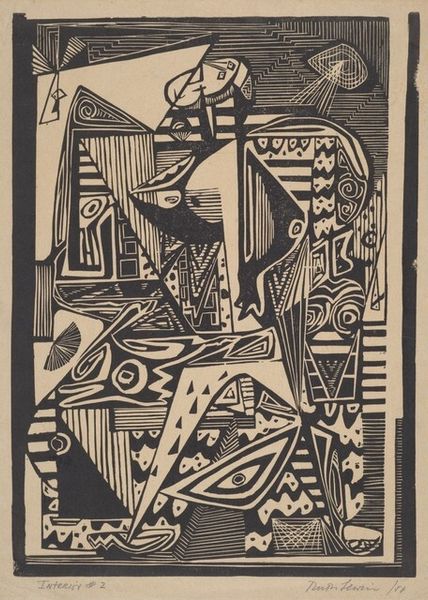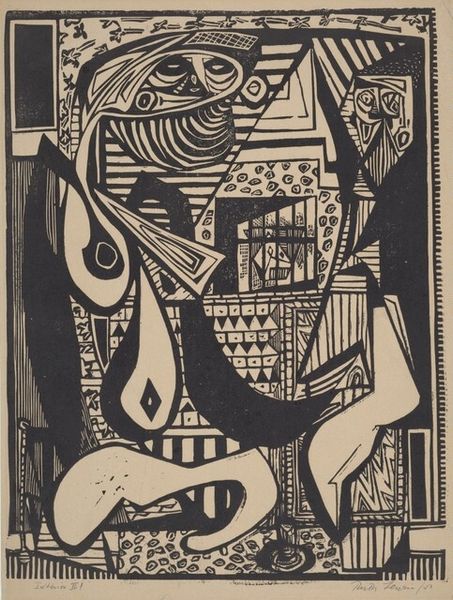
drawing, graphic-art, print
#
portrait
#
drawing
#
graphic-art
# print
#
caricature
#
caricature
#
modernism
Dimensions: block: 253 x 181 mm sheet: 292 x 240 mm
Copyright: National Gallery of Art: CC0 1.0
Curator: This woodcut, created around 1935 by Gregory Dowler Ivy, is entitled "Reflection." What's your initial impression? Editor: Striking contrasts, definitely. It's unsettling, somehow. Those wide eyes staring out... there's a haunted quality about it. Curator: Yes, the eyes do hold the gaze. The stark black and white, the simplified forms... it’s very much in line with the modernist aesthetics that took root in America. But tell me more about "unsettling." Editor: The composition is what gets to me. The woman gazing into a mirror but the reflection isn't quite...right. And she seems enclosed, surrounded by rigid lines. It speaks to the constricting roles that were placed on women and enforced by mass culture and advertising, particularly during the Depression. Is this a domestic sphere or a cage? Curator: I see your reading, certainly in its focus on duality, yet those "rigid lines" also have a kind of power. The mirror, of course, is a potent symbol. But consider that the "reflection" here is far more stylized. Almost…hieratic. Think back through pictorial tradition of a "double", and how that figure may indicate an aspiration towards an impossible standard of feminine "grace." Ivy asks us if either women here is capable of expressing or existing outside of imposed beauty standards. Editor: It’s fascinating to consider it that way, the "reflection" almost as an unattainable ideal. Looking at the material culture shown there on her vanity adds another layer, too. It suggests beauty is achieved, performed, and is capital. Even those decorative "combs" at her vanity recall decorative traditions dating back millenia in Egyptian sarcophagi... all these rituals we must do. Curator: Precisely! There’s such a depth to what appears simple here, which I find incredibly effective. What might first appear as "surface" ends up signaling far more resonant social critiques, extending our memories across great spans of time, cultures, and expectations of women, and femininity, Editor: Absolutely, that combination is where its enduring power resides. It allows us to trace this discourse regarding the role and agency of women in visual culture, from domestic advertising all the way to a Pharaoh's burial chamber. A seemingly simple composition contains worlds.
Comments
No comments
Be the first to comment and join the conversation on the ultimate creative platform.
